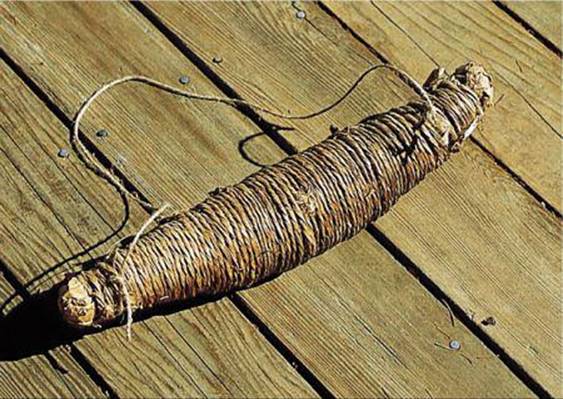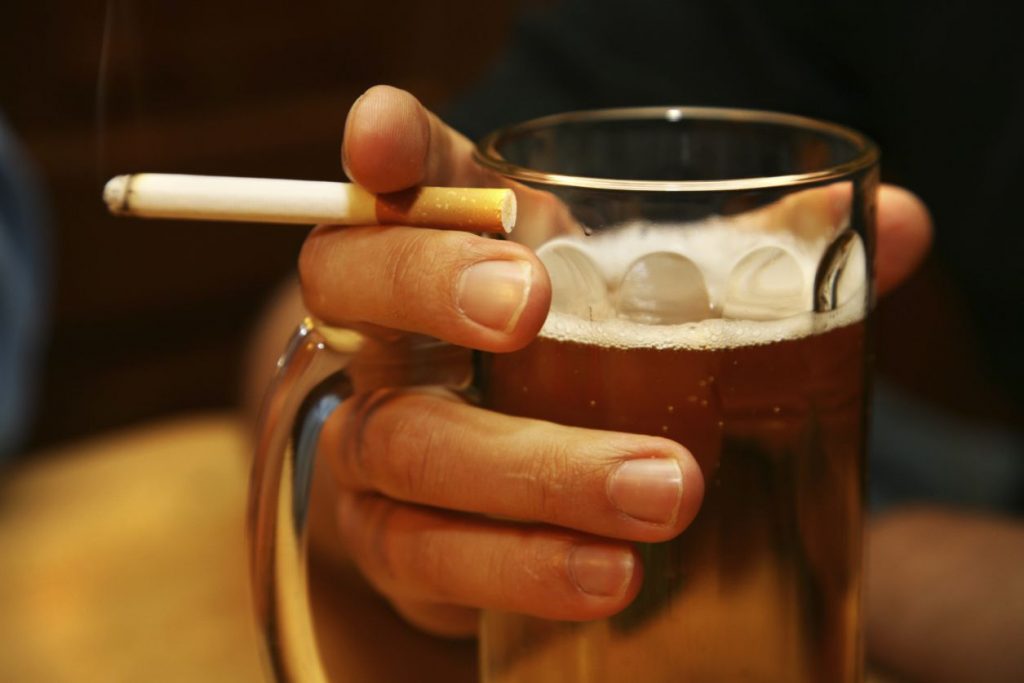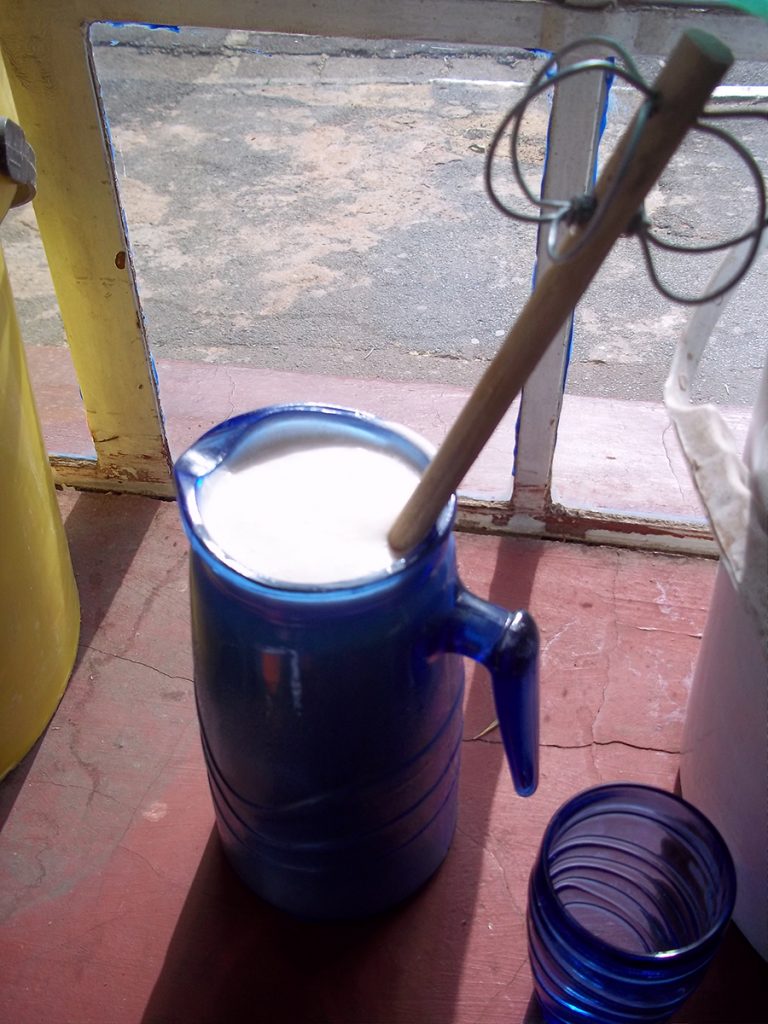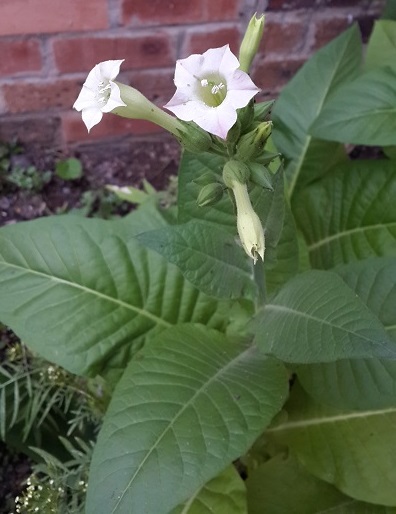The Distortion of our Sacred Plant Medicines – and our Reconnection to their Healing Power!
By Jean-Francois Sobiecki B.Sc Hons. (Ethnobot).
Having researched Medicinal and Healing Plants for much of my life, has allowed me to observe how different cultures see and use plants for medicines, foods and religious purposes.
I have a particular interest in psychoactive plants – those plants that have actions on the nervous system and affect how we think, feel and act.
What I became aware of on my journey researching these plant medicines (Sobiecki, 2008), is how certain ancient and sacred psychoactive plant medicines have lost their power, due to being adulterated and distorted by the Western consumer industry model.
The three sacred psychoactive plant medicines I will explore in this article include: Tobacco, Cacao and Alcohol.
 Petum/Nicotiana The Tobacco Plant
Petum/Nicotiana The Tobacco Plant
The Tobacco plant, Nicotiana(67 species occur), is a very ancient and sacred plant medicine (even more so than Ayahuasca it is thought) used all around the world, from the First Nations Native American people, South American shamanic societies through to Southern African tribal societies. “The name tobacco was originally applied to the plant in error. In fact this term referred to the cane pipe, called a tabaco or tavaco, with two branches for the nostrils, which was used by the Native Americans for sniffing tobacco smoke. The tobacco itself was variously called petum, betum, cogioba, cohobba, quauhyetl, picietloryietl,and these names sometimes appeared later in herbals or pharmacopoeias.” (Brookes, 1937). But we will stick with the common name Tobacco.
There are many reports of medicinal uses of tobacco by precolumbian Native Americans; most notably the fresh green leaves were applied for the relief of pain, used in powdered form for the relief of excessive nasal mucus and applied locally to heal wounds and burns (Charlton, 2004).
Tobacco is used in shamanic healing in the Amazon region in a roll form called Mapacho(pure jungle tobacco-Nicotiana rustica), the smoke of which is blown onto patients to cleanse a persons mental energetic field before going into Ayahuasca ceremony. I have developed a strong relationship with Mapacho and can attest to its strong spirit and cleansing ability. It is one of the most sacred & powerful plants to use to initiate, cleanse and pray with, to me.
 A mapacho, a roll of tightly glued tobacco leaves from the Amazon.
A mapacho, a roll of tightly glued tobacco leaves from the Amazon.
What we have done in western society though is to distort Tobacco’s cleansing nature by mixing him (considered to hold masculine energy in Amazonian shamanic traditions), with hundreds of polluting chemicals that makes cigarette tobacco an entirely different beast – that I put forward here that the western consumer system’s dark alchemy has reversed Mapachos medicinal properties into a disgusting and polluting killing machine. There is certainly no comparison between the effect of the smoke of ordinary cigarettes and that of Mapacho, one is dark and the other is light, in my opinion as a herbalist. Mapacho smoke is used in Amazonian traditions to bless other plants and carry prayers for people and nature forward (Skye Cielita Flor, pers comm), while in the West many use tobacco to merely enhance ones ego addictions. Very different substances and uses of the same plant, but that has been adulterated in the latter case.

The same can be said about Alcohol.
Alcohol was traditionally made into sacred beveragesin eras gone by in Europe, South America and elsewhere around the world, by adding psychoactive plants that would impart more potency to the brews and beers made, and were given in ritual offerings to the Gods and Goddesses (Thor, Bacchus, Isis etc).
An experience in Peru showed me how far away from that sacred use we have gone in modern times, where I consumed a beer just to cool down, but that left me feeling very dark and angry. This made me realize that Alcohol should be approached as a sacred substance and not irreverently. The question I had for myself at that time was; why have I sometimes had beautiful and magical experiences with Alcohol e.g., sharing a rare bottle of red wine with a friend that resulted in an amazing heart opening experience and then had dark and aggressive experiences in clubs as a youth drinking Alcohol e.g., (and not in great quantities either.) What occurred to me is that the power of intention together with a strong and sacred psychoactive substance, and ones relationship to that plant or substance, is what makes the difference. This could be one reason why so many people around the world who use store bought Alcohol carelessly, often leads to violence – in that there is no respect for this alcohol and its powerful psychoactive effects that quickly results in intoxication and getting a Smack from the Spirits-so to say!
On the flip side Home Brewed Traditional Beer,for example, requires a lot of attention, time and respect in making it, but that is rewarding and respecting to drink, as well as being very nutritious with its natural vitamins and minerals, unlike commercial beers. I learned this from watching how my teacher made Zulu home brewed beer and the celebration of it when it was ready.
 Umqombothi African traditional beer
Umqombothi African traditional beer
Alcohol is a powerful psychoactive substance derived from plants (in fact, it can be described as the essence or spirit of plants) and perhaps for our collective benefit we could start seeing Alcohol not as what it is portrayed in advertising – as an intoxicant for partying only – but as a sacred plant beverage to respect and honor Life and give respect to the plant from which the alcohol is made! Wine is used in the Catholic church as a Sacrament, so why do we abuse her so, on the weekend in bars and clubs! It makes me wonder and imagine if those same Gods like Bacchus punishes people with an intoxicating state and awful spinning and sickness for abusing alcohol. Perhaps we should re-perceive Alcohol with respect, no differently than any other sacred psychoactive plant.
The same applies to Chocolate.
 Chocolate tree bean pod.
Chocolate tree bean pod.
Yes, that favorite sweet for many of us. Yet, is chocolate we buy in supermarkets really chocolate?
The Chocolate Tree – Theobroma cacao is a beautiful and magical tree that bears multicolored fruit pods and flowers that come out directly from the trunk; a tree rightfully belonging in the movie Avatar! Yet, when I show people photos of the tree in presentations most people do not recognize her, which indicates again, how far disconnected we have become from the source of foods and sacred medicinal plants that nourish us.
Imagine doing a thought experiment where all the foods sold in the shops translated into the plants they are made from; you would see most of the shop would be plants off course; most notably wheat-which is a beautiful plant, and one plant would stick out 50-60% if not more, all over the shop-any guesses what it would be? It would be a grass plant- the Sugar Cane plant: Saccharum officinnarum,that we have taken and extracted the 13% of the plant that is sugar into its refined form; one of the most addictive substances we know, and have put it into nearly all other food products now. This is an insanely unhealthy act if you think about it, but that is quite the norm now, even though, mass consumption of sugar in food only started as a phenomena in the last 350 years. This has been a major factor in the rapid rise of diabetes, obesity and heart attacks around the world. Dr. Frank Hu, professor of nutrition at the Harvard T.H. Chan School of Public Healthdemonstrated in a 15-year study, people who got 17% to 21% of their calories from added sugar had a 38% higher risk of dying from cardiovascular disease compared with those who consumed 8% of their calories as added sugar.
Further to this interesting statistic, I would argue that the addition of salt, sugar and fats dampens the potent psychoactive properties of pure cacao.When I was in Peru we visited a Cacao farm, where I saw these beautiful trees and how the beans are prepared into Cacao butter by removing the beans from the pods and allowing them to ferment in racks, after which, they are separated with heat into cacao butter etc. Cacao beans were revered by the Mayans and the Aztecs, where they were considered as currency, and the Maya celebrated an annual festival to honor their cacao god Ek Chuah,with offerings of cacao beans. Cacao in Mesoamerica was not available to the masses but to the warrior class, nobility and rulers, and was originally not taken with sugar (that is a highly addictive substance) at all – but was drank as a bitter water called cacahuatl or made into a paste as a sacred food of the gods. Now all we need is 10 bucks and we can eat our heart out on its manipulated form as shop chocolate.
 The Chocolate Tree – Theobroma cacao
The Chocolate Tree – Theobroma cacao
The strange paradox is, that pure raw cacao is a Heart Food– rich in phyto (plant) chemicals called alkaloids and flavanoids that dilate the veins, keeping the blood pressure low and helping the heart with its high magnesium content – yet now commercial chocolate with all the Added Fats and Salt and Sugar (some of the most addictive substances we know) makes chocolate less healthy than its raw form and over eating commercial chocolate will kill your heart slowly – another good example where highly addictive substances like fats, sugar and salt have been used as adulterants to distort and manipulate the healing power of the sacred plant medicines,-changing their healing nature to one of addictiveness!
We should realize that consumer industry does not, for the most part, have our health interests at heart, and that it promotes addictive substances like the refined carbohydrate industry and sugar to our detriment, leading to heart disease and cancers, epidemics that are rarely mentioned on television etc. Think about why that is! It is very clear from these few examples such as Cacao and Tobacco, (and we did not go into the Coca plant) that sacred plant medicines have been intentionally adulterated or manipulated and their power hijacked to create super addictive and distorted hybrid substances.
Having attended Cacao ceremonies and drinking pure raw cacao in quite a large quantity was a visionary and heart opening experience. A beautiful sacrament that requires a ritual setting with song and music and a fire!
This is what constitutes sacred space; the gathering of people in a demarcated space to give honor to Life through Song, Dance, Prayer and Celebration! How we have lost this quickly in modern day society-that is until now, where people are beginning to become aware of their disconnection from Nature and these basic and ancient Human social activities that are at the heart of being Human.
It is time, I think, we Re-Spect, Re-Learn,and Re-Connect to our sacred plant medicines like Cacao, Alcohol and Tobacco (that we have lived with for thousands of years, but fell asleep in only the last
few hundred), and all those other Countless Food and Medicine Plants that give us Life and Well-being that we are fast forgetting, in this time of distorted truths.
Jean-Francois’ PhytoAlchemy Courses on African and Global Psychoactive Plants: http://phytoalchemy.co.za/faq/
Jean-Francois will soon be Launching his PhytoaAlchemy Podcast Series on New Agora,where he will be exploring:
Disconnection from Nature: Why this is Happening in our Societies and Possible Remedies!
The Language Between Things: Biosemiotics and Ritual Plant Medicine Use.
What is being a Shaman Yesteryear and Today? How has Shamanism changed, and where is it going?
A Cross Cultural Tribal Technology of Healing the Mind with Psychoactive Plant Medicines -Its Applications in Modern Times!
The Major Visionary Plants like San Pedro, Ayahuasca and Psilocybe Mushrooms as Medicines and Self Development Tools.
Gender Based Violence & The Culture of Blood and Gore and more…
Watch This Space!
References
Brookes, J.E. Tobacco: Its History.Illustrated by The Books, Manuscripts and Drawings and Engravings in the Library of George Arents Jr, Vol 1: 1507–1615. New York: Rosenbach, 1937
Charlton, A. Medicinal uses of tobacco in history. Journal of the Royal Society of Medicine Volume 97 June 2004 (Online).
Sobiecki, J.F. A review of plants used in divination in southern Africa and their psychoactive effects.South African Humanities. 2008. 20: 333–351.
Come Follow Us on Twitter – Come Like Us on Facebook
Check us out on Instagram – And Sign Up for our Newsletter










